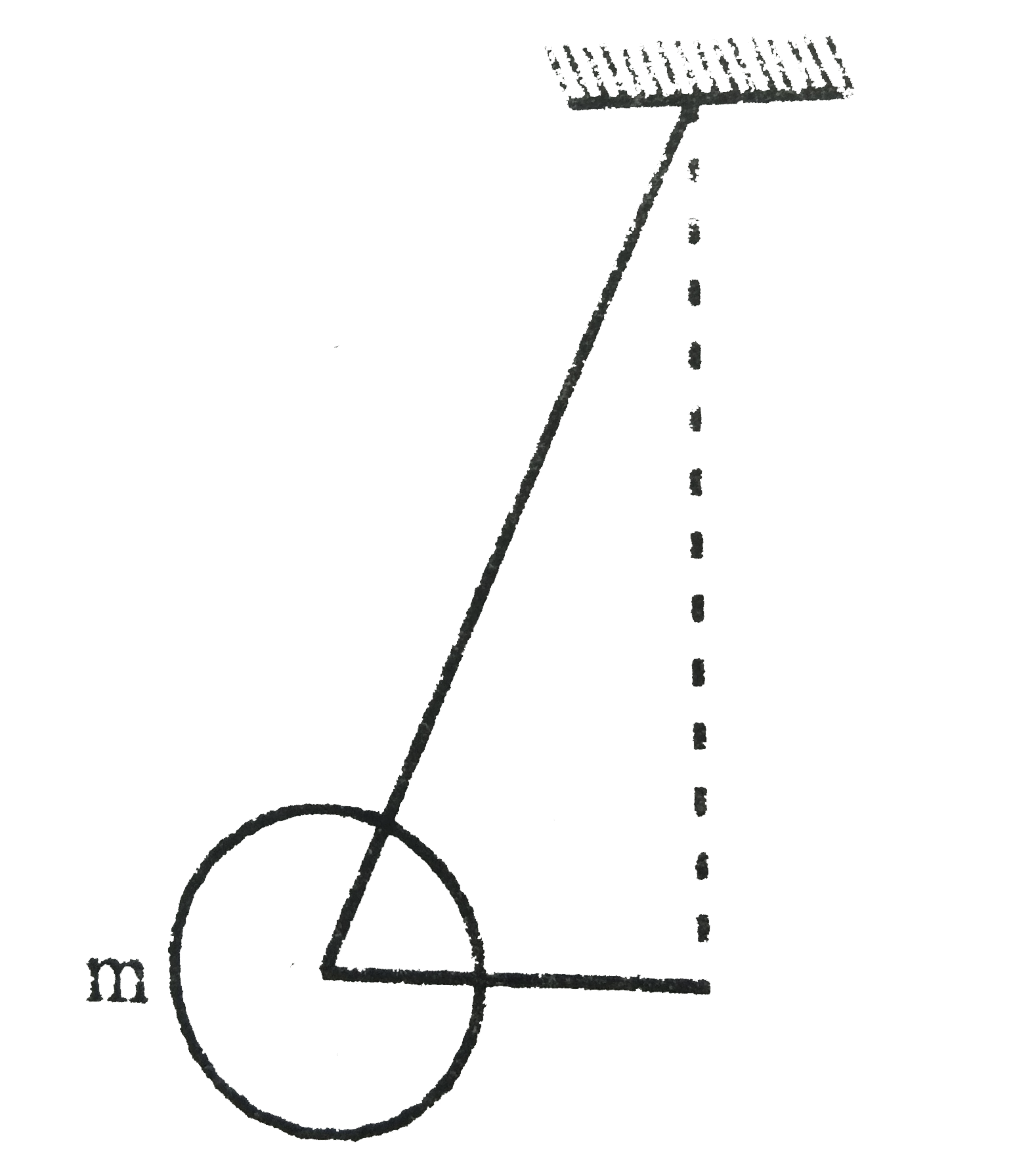A particle moves in a circle of radius 1.0cm with a speed given by v=2t , where v is in cm/s and t in seconds.
(a) Find the radial acceleration of the particle at t=1s .
(b) Find the tangential acceleration of the particle at t=1s .
(c) Find the magnitude of net acceleration of the particle at t=1s .Solution in Gujrati
The correct Answer is:(a) 4cm/s2 (b) 2cm/s2 (c) √20cm/s2
Step by step video, text & image solution for A particle moves in a circle of radius 1.0cm with a speed given by v=2t , where v is in cm//s and t in seconds. (a) Find the radial acceleration of the particle at t=1s . (b) Find the tangential acceleration of the particle at t=1s . (c) Find the magnitude of net acceleration of the particle at t=1s . by Physics experts to help you in doubts & scoring excellent marks in Class 12 exams.
Updated on:21/07/2023Topper's Solved these Questions
- CIRCULAR MOTIONBOOK - ALLEN CHAPTER - CIRCULAR MOTIONEXERCISE - Dynamics of circular motion
8 Videos
- CIRCULAR MOTIONBOOK - ALLEN CHAPTER - CIRCULAR MOTIONEXERCISE - EXERCISE(S-2)
6 Videos
- CIRCULAR MOTIONBOOK - ALLEN CHAPTER - CIRCULAR MOTIONEXERCISE - EXERCISE (J-A)
6 Videos
- BASIC MATHSBOOK - ALLEN CHAPTER - BASIC MATHSEXERCISE - Question
1 Videos
- CURRENT ELECTRICITYBOOK - ALLEN CHAPTER - CURRENT ELECTRICITYEXERCISE - EX.II
66 Videos
Similar Questions
The ball of mas m moves with speed v againest a smooth , fixed vertical circular groove of radius R kept on smooth horizontal surface find the
a. normal reaction of the floor or the ball.
b. normal reaction of the vertical wall on the ball.
View SolutionA stone is launched upward at 45∘ with speed v0. A bee follow the trajectory of the stone at a constant speed equal to the initial speed of the stone.
(a) Find the radius of curvature at the top point of the trajectory.
(b) What is the acceleration of the bee at the top point of the trajectory? For the stone, neglect the air resistance.
View SolutionA ball of mass (m)0.5kg is attached to the end of a string having length (L)0.5m. The ball is rotated on a horizontal circular path about vertical axis. The maximum tension that the string can bear is 324N. The maximum possible value of angular velocity of ball (radian/s) is -
 .
.
View SolutionFind dydx for the following :
(i) y=x7/2 (ii) y=x−3
(iii)y=x (iv) y=x5+x3+4x1/2+7
(v) y=5x4+6x3/2+9x (vi) y=ax2+bx+C
(Vii)y=3x^(5)-3x-1/x
View SolutionIn the Bohr's model of hy drogen atom, the electron moves around the nucleus in a circular orbit of radius 5×10−11m. Its time period is 1.5×10−16s. The current associated with the electron motion is:-
View SolutionA particle moves in a circle of radius 20 cm. Its linear speed is given by v=2t, where t is in second and v in metre/ second. Find the radial and tangential acceleration at t=3s.
View SolutionA particle moves in circle of radius 1.0 cm at a speed given by v=2.0 t where v is in cm/s and t in seconeds. A. find the radia accelerationof the particle at t=1 s. b. Findthe tangential acceleration at t=1s. c.Find the magnitude of the aceleration at t=1s.
View SolutionThe speed of a particle moving in a circle of radius r=2m varies with time t as v=t2, where t is in second and v in m/s. Find the radial, tangential and net acceleration at t=2s.
View SolutionA particle moves in a circle of radius 1.0cm with a speed given by v=2t , where v is in cm//s and t in seconds. (a) Find the radial accerleration of the particle at t=1s . (b) Find the tangential accerleration of the particle at t=1s . Find the magnitude of net accerleration of the particle at t=1s .
View SolutionA particle moves in a circle of radius 30cm . Its linear speed is given by v=2t , where t in second and v in m//s . Find out its radial and tangential acceleration at t=3s .
View Solutionएक कण 1.0 cm की त्रिज्या वाले एक वृत्ताकार पथ पर चल रहा है। इसकी चाल u समय के साथ बदल रही है। चाल का मान u =2.0 t है, जहाँ t का मान सेकंड में तथा u का मान cm/s में है। (a) t=1s पर कण त्रिज्या की ओर त्वरण निकालें। (b) t=1s पर कण का स्पर्शरेखा की ओर त्वरण निकालें। (c) t=1s पर कण के त्वरण का परिमाण निकालें।
View SolutionA particle moves in a circle of radius 2 cm at a speed given by v =4t, where v is in cms ^-1 and t in seconds. The tangential acceleration at t =1s and total acceleration at t =1s are respiccitively .
View SolutionA particle moves in a circle of radius 20 cm. Its linear speed is given by v = (3t^(2) +5t) where t is in second and v is in m/s. Find the resultant acceleration at t = 1s.
View SolutionA particle moves in a circle of radius 1.0 cm at a speed given by v = 2.0 t, where v is in cm⋅s−1 and t in seconds. Find the radial acceleration of the particle at t = 1 s.
View SolutionA particle moves in a circle of radius 20 cm. Its linear speed is given by v=2t, where t is in second and v in metre/ second. Find the radial and tangential acceleration at t=3s.
View SolutionA particle moves in circle of radius 1.0 cm at a speed given by v=2.0 t where v is in cm/s and t in seconeds. A. find the radia accelerationof the particle at t=1 s. b. Findthe tangential acceleration at t=1s. c.Find the magnitude of the aceleration at t=1s.
View Solution
